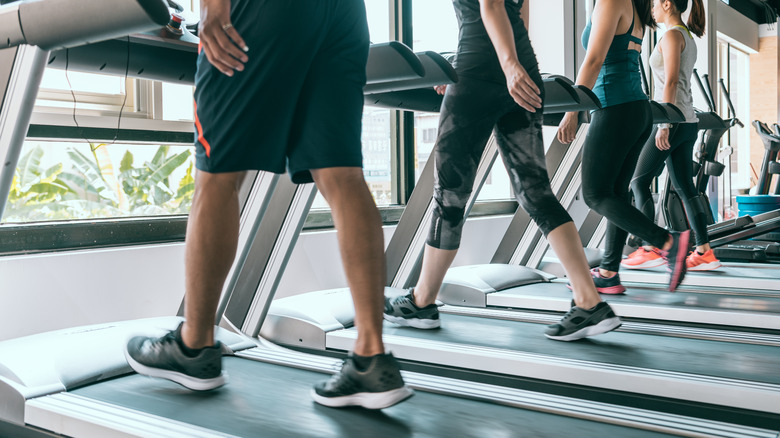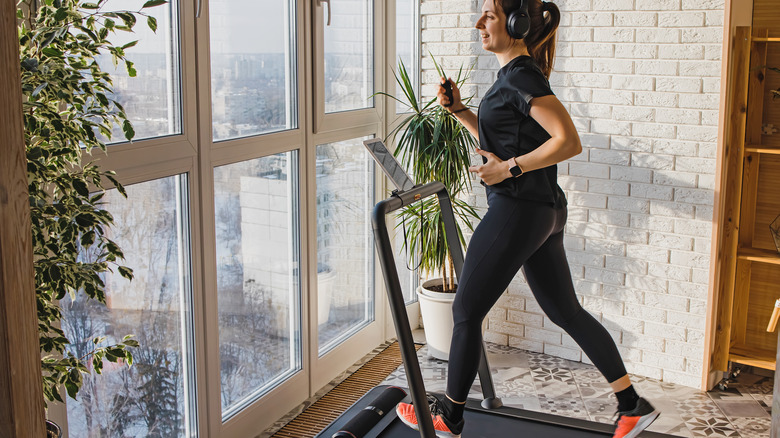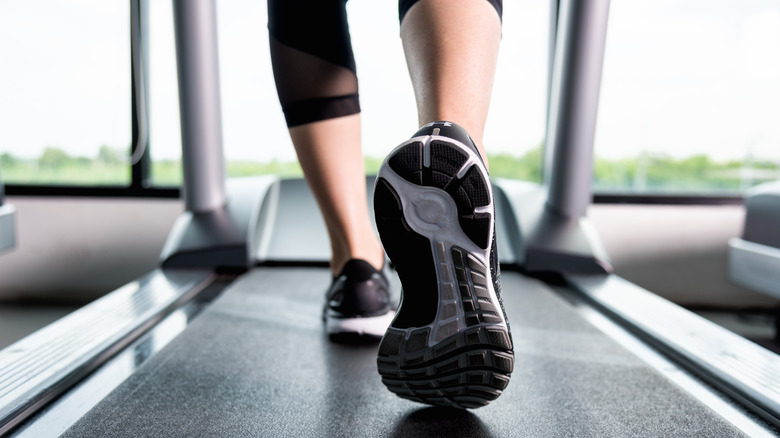If You Have Knee Pain This Is How You Should Be Using Your Treadmill
Every week there seems to be a new fitness trend emerging from either TikTok or Instagram with the hottest piece of gym equipment — the treadmill. Whether you're training for a marathon or getting your "Hot Girl Walk” on, this equipment is a goldmine for burning calories and easing achy pain. More specifically the treadmill is trending as a miracle worker for improving knee pain, which is extremely important since knee pain, stiffness, and swelling have increased by 65% over the past 40 years according to a 2012 study. But, how does it work?
Believe it or not, the trick is to walk backward on the treadmill. Similar to forward walking, walking backward, or retro walking, targets the lower body, but it also helps to decrease knee pain, physical therapist Kris Ceniza tells Bustle. Sedentary lifestyles, injuries, overuse, obesity, tendonitis, and more are some of the culprits behind knee pain. That being said, walking in reverse can help regardless of the cause, explains Ceniza. This is because walking backward is a popular physical therapy technique. It's used to help those recovering from knee, hip, or ankle surgery as it reinforces focusing on proper knee extension and stretching the dorsal part of the foot, says Alyssa Semones, a sports performance physical therapist, who spoke to Shape.
How walking backwards on a treadmill helps knee pain
Despite walking in reverse on a treadmill being a trend on TikTok, there is some scientific evidence that this practice does have some health benefits. Similar to walking forward, walking backward is a great way to build up leg strength. But there's a catch. Instead of the quads and hip flexors being contracted to work concentrically when walking forward, a backward stroll targets the hamstrings and glutes to work concentrically (via Bustle). In other words, they switch roles. This is a great way to fix any muscle imbalances and correct any poor mechanics that are happening in the legs, shares Ceniza.
In fact, researchers from an older 2012 study reported that running backward can help alleviate pain in the patellofemoral joint. This joint is located in the front of the knee and it's where the underside of the patella (kneecap) and femur (thigh bone) meet. However, more research is needed as the results were inconsistent.
However, a 2019 study shows backward walking is a promising exercise for improving runner's knee, also known as patellofemoral pain syndrome. This is because walking in reverse puts less strain on this patellofemoral joint while also increasing quad strength and reducing pain. In addition, the Journal of Physical Therapy Science points out that walking backward can also improve balance, stability, and step length. With that in mind, just about anyone may benefit from taking a backward stroll on the treadmill. But, should you?
Should you try the treadmill trend?
Before hopping on any fitness trend, it's important to assess your health and fitness. Talk to your doctor if you're recovering from surgery or have concerns. Then if you've received the all-clear, try to start off slow and ease into it as walking backward can feel a bit awkward at first (per Shape). But don't let that discourage you.
If you're considering retro walking to ease your knee pain, then you're in luck. Ceniza explains, "I would recommend it to nearly everyone, including those who don't have knee pain" because its benefits can support almost anyone's body (per Bustle).
When reverse walking, it's important to prioritize safety. Before starting, stand with your feet on both sides of the belt and face the rear. Place the safety lanyard on your shirt, grab the handrails, then choose a slower than normal walking pace. Shape suggests starting at 1.5 to 2.0 mph and then increasing to 3.0 to 3.5 mph once you're comfortable.
Keep in mind, there are other ways to ease knee pain. For instance, building up the quadricep muscles is a great way to reduce knee pain, points out Semones (via Shape). The idea is that when the quads are stronger, this takes the pressure off of the knee. Some of the best exercises for strengthening the quads are front squats, seated leg extension, and reverse lunges, shares Men's Health. Add dumbbells to intensify these exercises or modify them to lower the intensity level.



